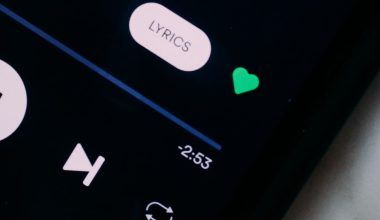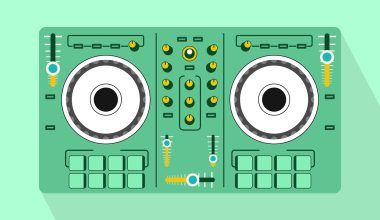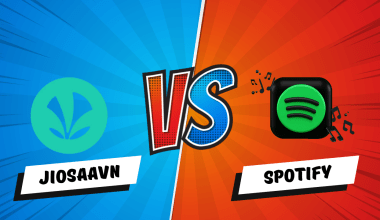Music distribution is the process that allows musicians to reach global audiences. Whether you’re a beginner releasing your first track or a seasoned artist, effective distribution is key to gaining visibility and generating income. In this guide, we’ll cover everything you need to know about music distribution, from understanding how it works to tips on maximizing earnings and managing your fanbase. With the right approach, you can make sure your music reaches the right audience at the right time.
What is Music Distribution and Why is it Important?
Music distribution is a crucial component of the music industry, serving as the link between artists and listeners. By delivering music to digital platforms such as Spotify, Apple Music, Amazon Music, and YouTube Music, distribution services allow musicians to reach a broader audience than ever before. Without a proper distribution strategy, even the most talented artists might struggle to gain visibility and grow their fanbase.
The goal of music distribution is to get your music onto streaming platforms and stores where fans can discover, listen to, and purchase your music. For independent artists, understanding the basics of distribution can mean the difference between obscurity and recognition. With more than 80% of music consumption now happening on digital platforms, effective music distribution is no longer optional—it’s essential.
The Evolution of Music Distribution: From Physical to Digital
In the past, music distribution was a costly and complex process. Artists depended on record labels to distribute their music to physical stores through formats like vinyl records, cassettes, and CDs. This model limited access, as only those with label support could get their music into stores. Independent artists had very few avenues to reach listeners outside their local area.
Today, the rise of digital distribution has revolutionized the industry. Music distribution now centers on digital platforms and streaming services, which allow artists to reach listeners globally. This shift has democratized the industry, empowering independent artists to distribute their music easily and affordably. The cost of distributing music digitally is significantly lower than the expenses associated with producing physical media, and artists can now retain more control over their work and revenue.
Key Benefits of Digital Music Distribution:
- Global Reach: Artists can reach audiences worldwide without the need for a label.
- Reduced Costs: Digital platforms eliminate the costs associated with physical production and shipping.
- Direct Fan Engagement: Artists can use digital platforms to connect directly with fans, fostering a stronger community.
Why Every Artist Needs Effective Music Distribution
Regardless of the genre or style, every artist needs an effective music distribution strategy. A solid distribution plan ensures that your music is accessible to fans around the world and helps you earn revenue from streams, downloads, and royalties. Here are some reasons why music distribution is essential for any musician:
Expanding Your Audience
Digital music distribution puts your music in front of millions of listeners worldwide. By making your songs available on popular platforms, you increase your chances of being discovered by new fans.
Earning Royalties
Streaming platforms like Spotify and Apple Music pay artists per stream. With a proper distribution setup, artists can earn royalties from their music. These royalties can accumulate into a significant revenue stream over time, especially as your fanbase grows.
Boosting Artist Visibility
The more platforms your music is available on, the higher the chances of listeners discovering you. Most distribution services also include promotional tools that help you track your streams, understand listener demographics, and improve your visibility.
Professional Representation
Having your music on major streaming platforms gives you a level of professional credibility. Fans are more likely to take you seriously when they can find your music on platforms they trust, such as Spotify, Apple Music, or Amazon Music.
Types of Music Distribution Services Available Today
Different types of music distribution services cater to various artist needs. Selecting the right service depends on your goals, budget, and preferences. Here are the primary types of music distribution services:
Music Aggregators
Aggregators are companies that distribute your music to multiple streaming platforms simultaneously. They simplify the distribution process by uploading your music once and automatically delivering it to platforms like Spotify, Apple Music, and Amazon Music. Examples of popular aggregators include DistroKid, TuneCore, and Deliver My Tune.
Label Distribution Services
These services are typically reserved for artists signed to a record label. Label distribution provides additional support, such as marketing and playlist pitching, along with distribution. Labels often have direct deals with streaming services, which may provide the artist with increased exposure but often result in higher costs and reduced royalty percentages.
Direct Partnerships
Established artists sometimes have direct deals with streaming platforms, which allows for custom arrangements around royalties, release strategies, and promotional efforts. However, this option is mostly available for highly recognized musicians or those with a significant fanbase.
Hybrid Distribution
Hybrid distribution combines aspects of traditional and digital distribution. These services may offer distribution to both digital and select physical platforms, allowing fans to purchase CDs or vinyl copies in addition to streaming.
How to Choose the Right Music Distribution Service
Choosing a music distribution service requires careful consideration. Here are some important factors to evaluate before making a decision:
Pricing Structure
Distribution services have different pricing models. Some, like DistroKid, charge an annual fee for unlimited uploads, while others, like TuneCore, charge per release. Make sure to understand the total cost and whether it aligns with your budget.
Royalty distribution varies by platform. Some services take a percentage of your earnings, while others offer a flat rate. Check the royalty structure and consider how much you’ll earn per stream.
Platform Reach
Not all distributors deliver to every platform. Check which platforms are included in the service. Major platforms to consider include Spotify, Apple Music, Amazon Music, YouTube Music, Tidal, and regional services if you’re targeting specific markets.
Additional Features
Many distribution services offer features like analytics, marketing support, and promotional tools. These extras can add value and make it easier to reach your audience effectively.
Customer Support
Reliable customer support is essential. Some services provide dedicated artist support teams, while others may only offer basic email support. Choose a distributor with customer service that matches your needs.
Step-by-Step Guide to Distributing Your Music
Successfully distributing your music involves more than just uploading it to a platform. Follow these steps for a smooth distribution process:
Prepare Your Music
Ensure your tracks are mixed and mastered to the highest quality. This step is crucial as platforms have quality standards, and low-quality audio can impact your credibility.
Select a Distribution Service
Research available options and choose a service that aligns with your goals and budget. Consider platforms like DistroKid, TuneCore, or Deliver My Tune, as well as label-based services if applicable.
Register Your Work
For royalty collection, register your music with a Performing Rights Organization (PRO) such as ASCAP, BMI, or PRS. This ensures you’ll receive royalties for public performances and plays.
Upload Your Music and Metadata
Most platforms require metadata such as track title, artist name, album art, genre, and release date. This information helps listeners find your music more easily.
Set Your Release Date
Strategically plan your release date to maximize attention. Consider releasing on a Friday, as this is when most music is dropped, and it may align with playlist updates on platforms.
Promote Your Release
After your music is live, promote it on social media, email lists, and through playlist pitching. Consistent promotion increases the chances of reaching more listeners.
7. Key Music Distribution Platforms to Consider
Each music platform has unique features that can help you grow your audience. Here’s a closer look at some major platforms:
Spotify for Artists
Spotify is one of the most popular streaming platforms globally. Through Spotify for Artists, musicians can access analytics, edit their profiles, and pitch to Spotify playlists. Spotify is particularly known for its editorial playlists, which can lead to significant increases in streams if your track is selected.
Apple Music for Artists
Apple Music is known for its high-quality streaming, and with Apple Music for Artists, you can gain valuable insights about your listeners. Apple Music also offers exclusive promotional opportunities, such as artist-curated playlists and Beats 1 radio.
YouTube Music
With billions of active users, YouTube Music is a valuable platform for reaching a wide audience. Artists can share music videos and engage with fans directly through the comment sections and community posts.
Amazon Music
Amazon Music offers an extensive library and is integrated with Amazon’s ecosystem, reaching users who have subscriptions to Amazon Prime. Amazon Music also allows for easy Alexa integration, providing additional listening convenience.
Tidal
Known for its high audio quality and artist-friendly royalty rates, Tidal is an excellent platform for musicians focused on quality. Tidal’s exclusive content and partnerships appeal to dedicated music fans and offer artists the chance to engage deeply with listeners.
How to Maximize Earnings Through Music Distribution
The potential to earn money through music distribution goes beyond streaming royalties. Here are some strategies to boost revenue:
Leveraging Playlists
Pitching your music to playlists on Spotify, Apple Music, and other streaming services is an effective way to increase streams. Many distribution services offer playlist pitching as part of their package or as an add-on service.
Merchandising and Bundles
Offer fans exclusive content or merchandise bundles. Some platforms like Bandcamp allow artists to sell merchandise alongside their music, creating additional revenue streams.
Engage with Fans
Social media is a powerful tool for artists to connect with fans. By maintaining an active social presence, you can drive more listeners to streaming platforms and grow a loyal fanbase that will support your releases.
Licensing and Sync Deals
Sync licensing involves getting your music placed in films, TV shows, ads, or video games. Platforms like Deliver My Tune provide sync opportunities, helping artists earn additional income from their music.
Promotion Strategies for Successful Music Distribution
Promotion plays a huge role in the success of any release. Here are effective strategies:
- Social Media Marketing: Share teasers, behind-the-scenes content, and release countdowns on social media.
- Email Marketing: Build a mailing list to inform fans directly about your new releases.
- Collaborations: Working with other artists can expose your music to their audience, expanding your reach.
- Press Outreach: Send your music to blogs, influencers, and YouTube channels that cover your genre to generate buzz.
Overcoming Challenges in Music Distribution
Navigating the world of music distribution comes with challenges. Here are common obstacles and ways to overcome them:
- High Competition: With thousands of songs released daily, it can be tough to stand out. Focus on quality and unique branding to create a distinct presence.
- Royalty Complexities: Understanding royalties and payments can be confusing. Partnering with a transparent distributor, like Deliver My Tune, helps ensure you’re fairly compensated.
- Marketing Limitations: Not all distribution services offer promotional support. Plan a marketing strategy that complements your distribution.
Music distribution enables artists to share their creations, build fanbases, and generate income. By selecting the right distribution service, understanding platforms, and promoting effectively, artists can maximize their reach and success. Embrace the possibilities that digital music distribution offers, and take your music to audiences around the world.
For further reading, explore these related articles:
- Free Music Distribution Services in India
- Best Free Music Distribution Platforms in India
- All You Should Know About Best Free Music Distribution for Labels in India
For additional resources on music marketing and distribution, visit Deliver My Tune.






